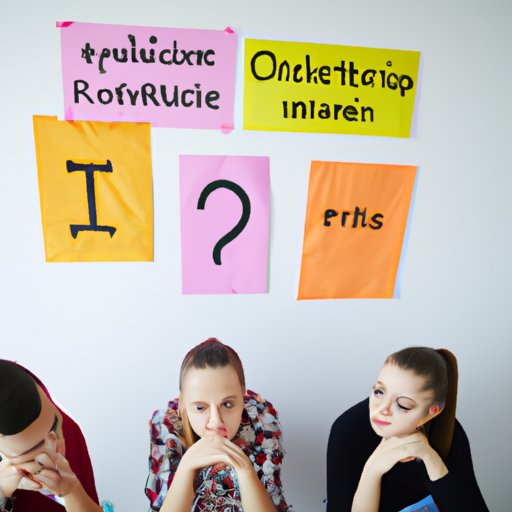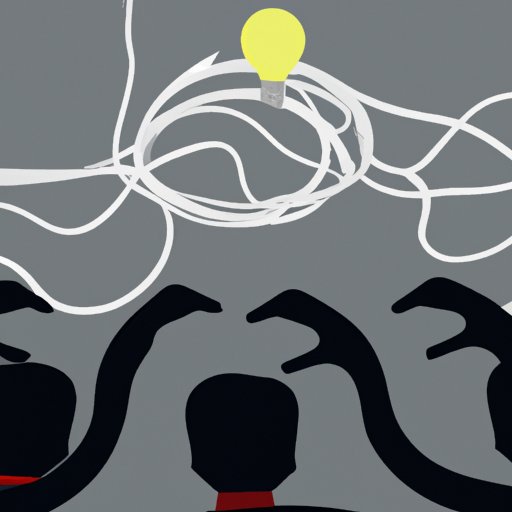Introduction
Creativity is a powerful tool that can help us solve problems, generate new ideas, and make a positive difference in the world. In order to cultivate this skill, it’s important to understand what creativity is and why teaching it is important.
Creativity is defined as “the use of imagination or original ideas to create something; inventiveness.” It involves taking existing ideas and combining them in new ways to come up with something fresh and unique. Teaching creativity encourages students to think outside the box, challenge assumptions, and explore different points of view.
Creativity is an essential skill in today’s world, as it helps people to come up with innovative solutions to problems. By teaching creativity, we can equip students with the tools they need to excel in their future careers and make a meaningful contribution to society.
Identifying Obstacles to Creativity
In order to teach creativity effectively, it’s important to identify any potential obstacles that could be preventing students from expressing their creativity. These obstacles can include fear of failure, perfectionism, and lack of motivation.
Understanding the Fear of Failure
One of the most common obstacles to creativity is the fear of failure. This can cause students to be hesitant to take risks or try something new, as they are afraid of being judged or ridiculed if their idea does not work out. It’s important to recognize this fear and provide support and encouragement to help students overcome it.
Overcoming Perfectionism
Another obstacle to creativity is perfectionism. When students strive for perfection, they can become overwhelmed and feel like their ideas aren’t good enough. It’s important to remind students that mistakes are part of learning and that it’s ok to make mistakes as long as they are learning from them.
Addressing Lack of Motivation
Lack of motivation can also be a barrier to creativity. Students may be overwhelmed by the task at hand or unsure of where to start. It’s important to provide guidance and structure to help students stay motivated and on track.

Demonstrating the Power of Brainstorming
Brainstorming is an effective technique for generating ideas and sparking creativity. It involves gathering a group of people together and having them come up with as many ideas as possible in a short period of time. Here are some steps for successful brainstorming:
- Establish ground rules such as no criticism or judgment of ideas.
- Encourage participation from everyone in the group.
- Create a relaxed atmosphere where everyone feels comfortable sharing ideas.
- Allow time for reflection between ideas.
- Encourage wild and crazy ideas.
It’s important to remember that the goal of brainstorming is to generate as many ideas as possible, without worrying about whether they are good or bad. By focusing on quantity rather than quality, you can open up the possibility for creative solutions that you may not have thought of otherwise.
Showcasing Examples of Successful Creative Projects
When teaching creativity, it’s helpful to showcase examples of successful creative projects from different industries. This can help to inspire and motivate students to use their own creativity to make a difference in the world. Here are some examples of projects that have made a difference in the world:
- The Hole in the Wall project, which provides free computers and internet access to children in rural India.
- The Rainforest Connection, which uses recycled cell phones to detect illegal logging in remote areas of the Amazon rainforest.
- The Green Belt Movement, which empowers women in Kenya to plant trees and combat deforestation.
These examples demonstrate the power of creativity and the positive impact it can have on society. By showing students these examples, you can encourage them to use their own creativity to make a positive difference.

Introducing Techniques for Sparking New Ideas
In order to foster creativity in the classroom, it’s important to introduce techniques for sparking new ideas. Mind mapping and freewriting are two popular techniques for generating ideas. Mind mapping involves creating a visual representation of a topic or problem and then brainstorming related ideas. Freewriting involves writing down whatever comes to mind without stopping to edit or judge the ideas. Both of these techniques can help to get the creative juices flowing.
Another technique for sparking new ideas is to ask questions. Questions can help to challenge assumptions and explore different perspectives. Encouraging students to ask questions can help to get them thinking creatively and come up with new solutions to problems.

Providing Strategies for Developing Creative Thinking Skills
In addition to introducing techniques for sparking new ideas, it’s important to provide strategies for developing creative thinking skills. Nurturing curiosity and imagination is key to fostering creativity. Encourage students to explore different perspectives and points of view, and to look at problems from a different angle. Learning to see problems differently can help to generate creative solutions.
Explaining the Importance of Taking Risks in Creativity
In order to foster creativity, it’s important to explain the importance of taking risks. Taking risks can help to push the boundaries of creativity and generate new ideas. It’s important to recognize the benefits of taking risks, such as learning from mistakes and pushing past comfort zones. Encourage students to embrace failure and learn from it, rather than letting fear of failure prevent them from taking risks.
Conclusion
In conclusion, teaching creativity is an important way to equip students with the skills they need to succeed in the future. It involves identifying obstacles to creativity, demonstrating the power of brainstorming, showcasing examples of successful creative projects, introducing techniques for sparking new ideas, providing strategies for developing creative thinking skills, and explaining the importance of taking risks in creativity. By following these steps, teachers can help their students unlock their creative potential and make a positive difference in the world.
(Note: Is this article not meeting your expectations? Do you have knowledge or insights to share? Unlock new opportunities and expand your reach by joining our authors team. Click Registration to join us and share your expertise with our readers.)
